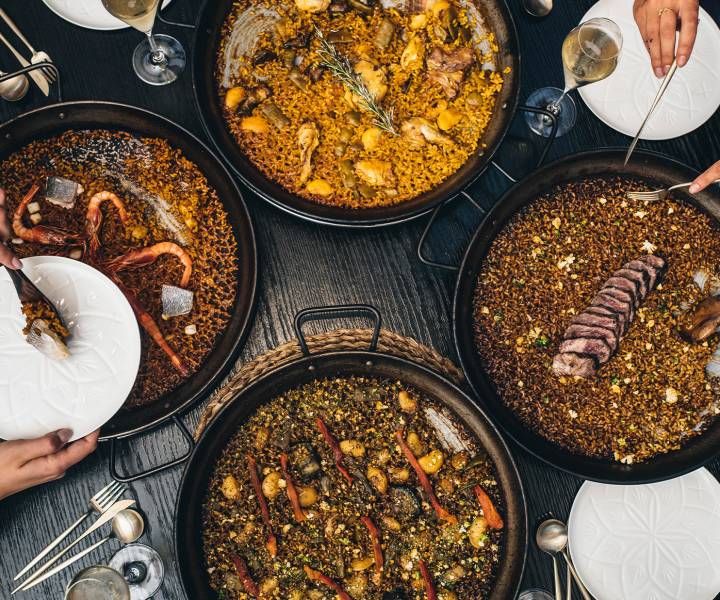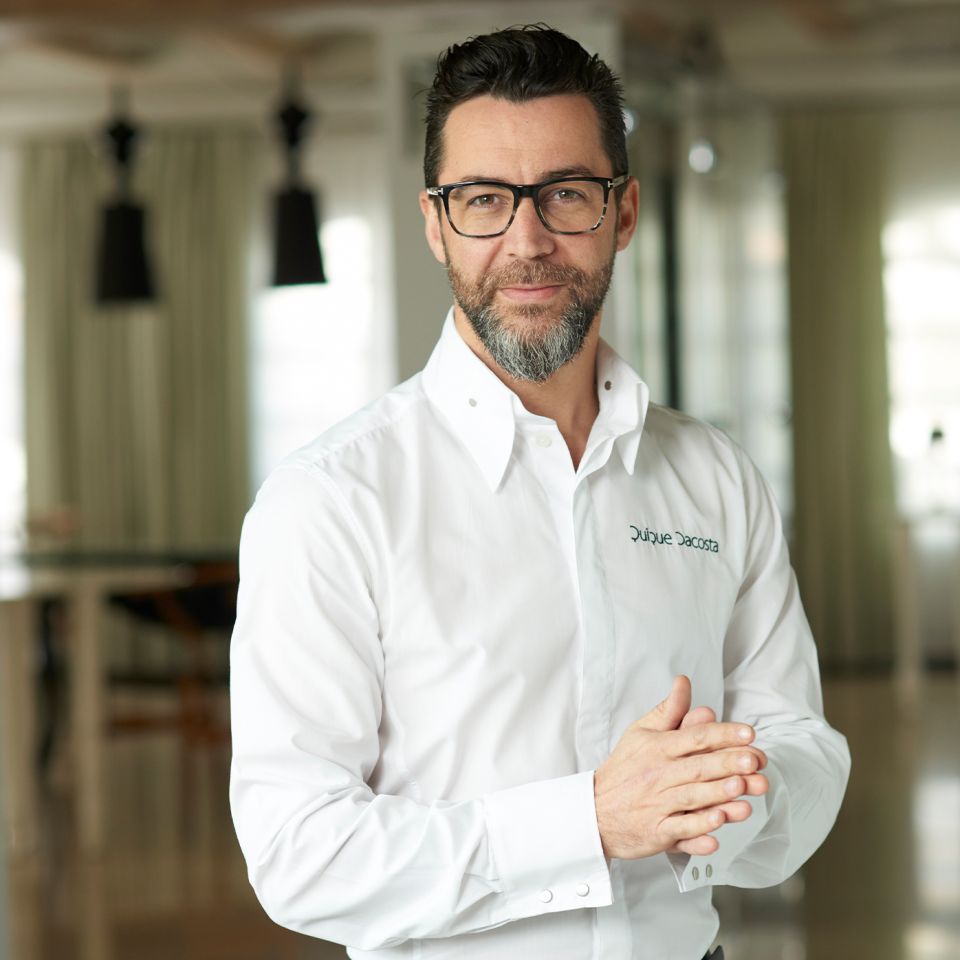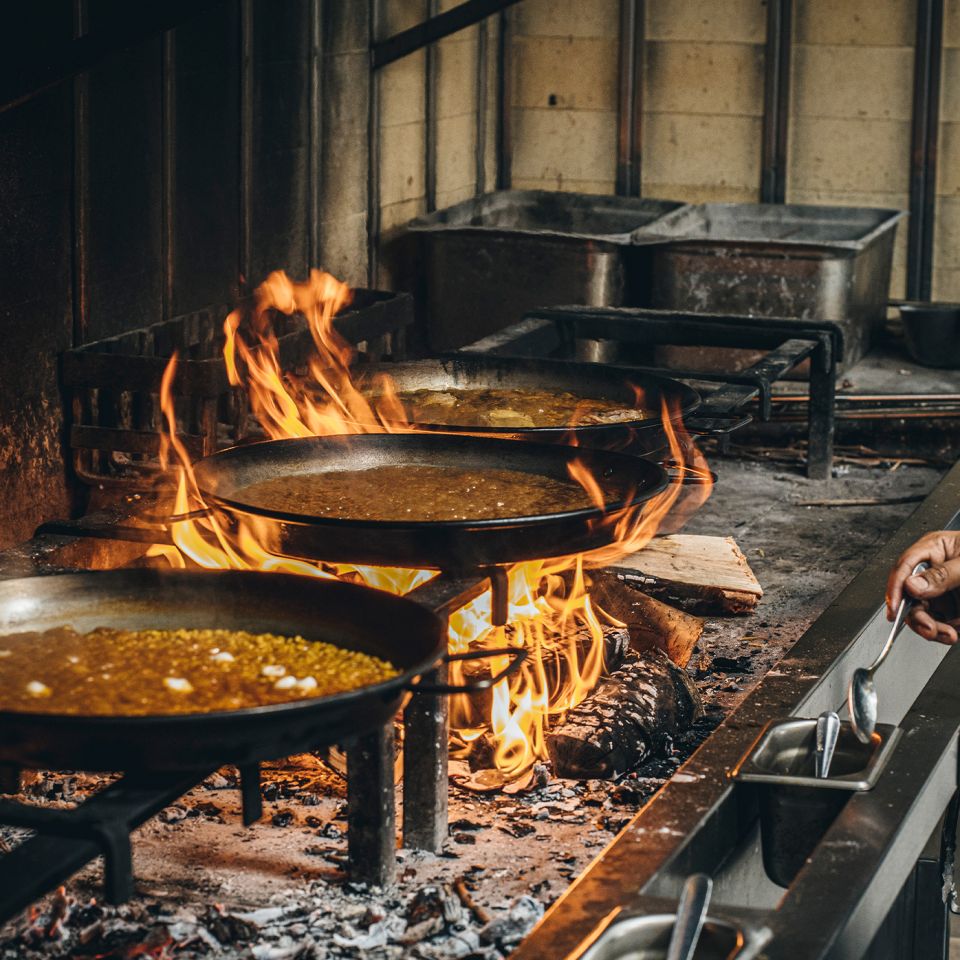Food
Chef Quique Dacosta’s top tips for cooking an authentic paella
by Noemi Martini

With three Michelin stars, renowned Spanish chef Quique Dacosta knows a thing or two about paella. Here, he shares five tips for perfecting Spain’s national dish
Valencia-born Michelin star chef Quique Dacosta combines traditional and modern cooking methods at his Fitzrovia restaurant, Arros QD. Specialising in paella cooked on both wood-fired and gas stoves in the theatrical open kitchen, Arros QD is the place to eat this quintessential Spanish dish in London.
Paella takes its name from the Spanish word for the large shallow pan that the ingredients are cooked in. Quique is passionate about sharing traditional paella recipes and cooking methods with the rest of the world. ‘I’d rather you cook a paella in a frying pan, than not cook one at all,’ he says.
Originating from the eastern Spanish city of Valencia, variations of paella have been passed down from generation to generation. Although relatively simple, the cooking methods are very specific. Here are Quique's tips for how to cook a delicious and authentic paella at home.

1. Fire it up
According to Quique, the key to an authentic paella lies in the heat. Traditionally, paella was cooked outside over fire. This method is still widely used, and at home a barbecue is one of the easiest ways to achieve an authentic environment for cooking paella. ‘The smoke also impacts the flavour,’ Quique says. ‘At Arros QD, different woods are used for different paellas, because each one creates a different flavour.’
The trick is to keep the heat evenly distributed under the pan, so that it all heats up at the same time. ‘If you’re cooking on a gas stove, put the paella pan in the middle and turn on all the hobs. That way you’ll have a stable level of fire everywhere,’ he advises.
2. Use local ingredients
The main principle of paella is that it is cooked from local ingredients. The traditional Paella Valenciana includes artichoke, saffron, chicken and rabbit, which are all local to the region. Further inland, snails and duck are also used. The English paellas, which Quique specifically designs for the British audience, contain ingredients such as Cornish Queen scallops or grass-fed tomahawk steak.

3. The rice must be right
‘The rice is not considered an ingredient, rather, it is the plate on which the dish is served. The rice is the conductor of the flavour,’ explains Quique. Traditionally, the paella rice must be very dry – the opposite of a risotto – therefore Quique recommends using the short grain Spanish rice bomba (similar to the paella rice you’ll find in British supermarkets) to achieve the best taste and texture.
4. The broth is the main event
Quique advises cooking the broth first, which can be a time-consuming process, taking up to three hours. ‘The stock is the key ingredient, as this is what adds the flavour to the dish,’ explains Quique. ‘The stock needs to be filtered. If it’s not clear, the rice won’t absorb it properly, then you end up with rice which is sticky and a bit too wet.’ You can filter the broth by scooping off the top layer of impurities as the liquid starts to boil.
‘In Spain, a lot of people don’t eat the meat in a paella. They focus on the rice because the meat is so overcooked,’ says Quique. The meat or seafood used for the broth should be discarded as it will be overcooked, and the remaining liquid will have most of the flavour. To achieve a lighter paella without any burned fat, add the meat and vegetables you want to eat in the final 20 minutes of cooking.

5. Don’t forget the socarrat
Socarrat is the crispy, caramelised layer of rice at the bottom of the paella. Here’s how Quique ensures a perfect socarrat:
‘After cooking the rice, meat and vegetables, add the very hot stock and put the heat on maximum under the paella pan. It should all start boiling. Stir it a bit and then leave it for 10 minutes. Then, lower the heat. Cook it on low for six minutes, and then for the last two minutes turn the heat back up to caramelise the base. This will intensify the flavour of the broth.’
Serve and scrape the delicious socarrat with a wooden spoon.
Arros QD
Book a reservation or purchase Arros QD At Home kits at arrosqd.com












